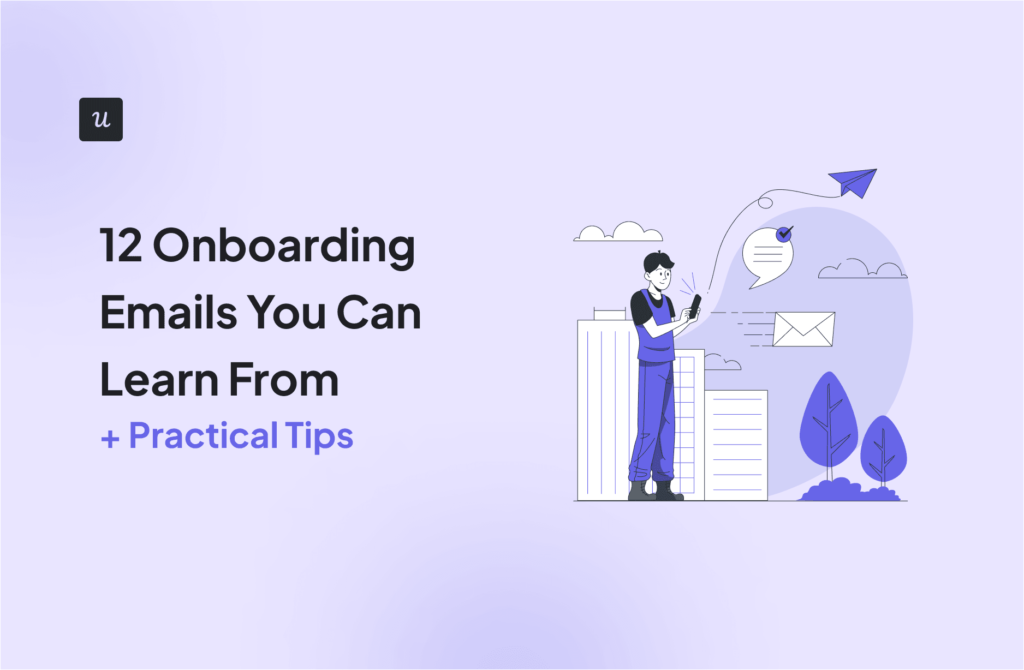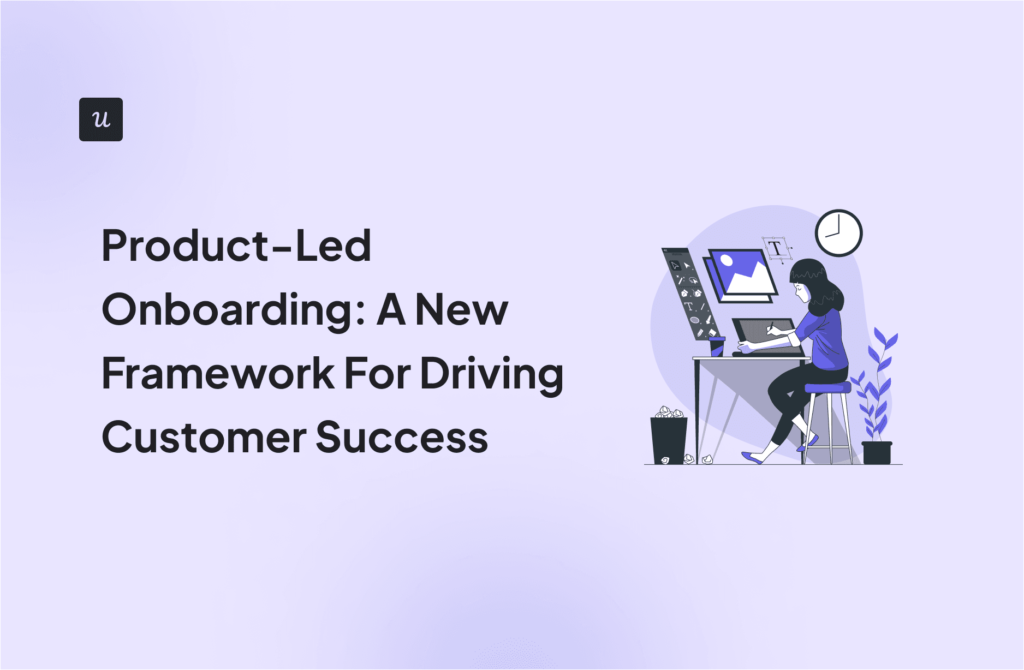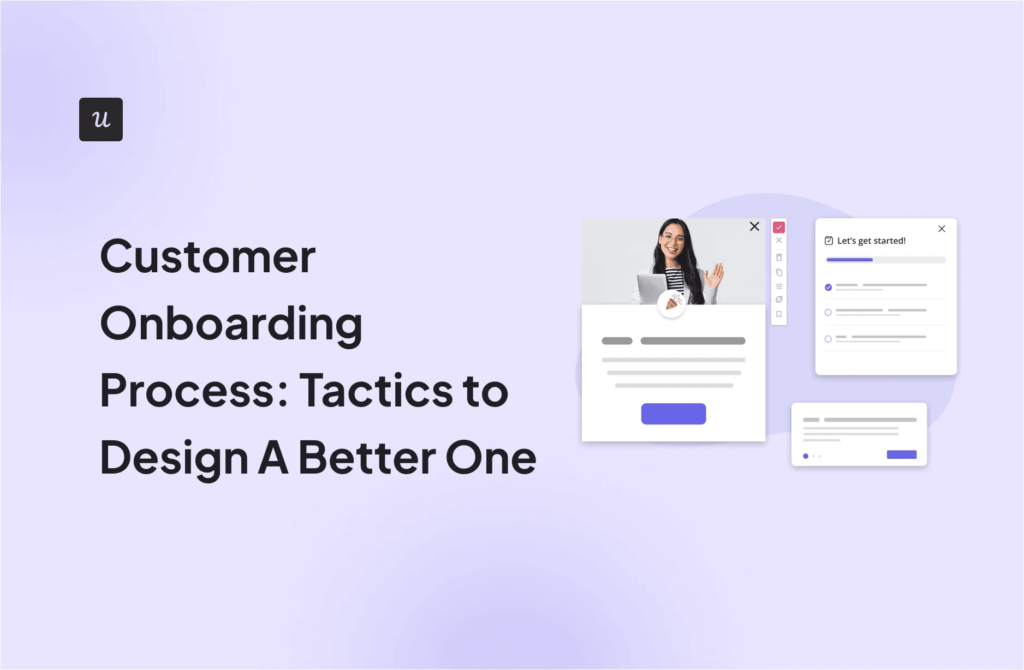
AI User Onboarding: 8 Ways To Use AI to Drive Success12 min read
Unless you’ve lived in a cave for the last year or so, you must have witnessed the shockwaves that AI is sending through the SaaS space. User onboarding is no exception.
The article explores how you can use AI user onboarding to drive your product success.
Shall we dive in?
Get The Insights!
The fastest way to learn about Product Growth, Management & Trends.
What is AI user onboarding?
Simply put, it’s the process of using Artificial Intelligence (AI) tools to enhance in-app user guidance and education during the onboarding process so users can reach their goals faster.
Thanks to Natural Language Processing (NLP) and Machine Learning (ML) algorithms, AI can help you analyze customer and product usage data to design and optimize the onboarding experiences you offer and make them more engaging.
Why use AI during the customer onboarding process?
AI can help product and customer success teams overcome some of the most common user onboarding challenges.
These include:
- Personalization: AI can give you insights into product usage so you can personalize the onboarding flows to unique user needs and help them integrate your product into their existing workflows.
- Microcopies: With AI copywriting you can test different copy formats and phrasing or voice tones to increase your adoption goals.
- Complexity: With AI, teams can optimize the onboarding flows to eliminate unnecessary steps.
- Time constraints: Chatbots and other AI-based tech can offer instant guidance to users.
- Limited resources: AI can take the pressure off your customer support and success teams and reduce the cost of onboarding and supporting users.
What are the stages of user onboarding that AI can optimize?
For starters, AI can optimize the sign-up process so that new users can start interacting with the product in less time. Once this happens, it can help them experience the Aha! moment and reach the activation points by customizing their onboarding paths.
During secondary onboarding, AI can analyze product usage and user behavior to guide feature discovery. AI-powered tools, like resource centers and chatbots, can provide users with ongoing on-demand support to address their pain points.
AI will also help you better identify and exploit account expansion opportunities.
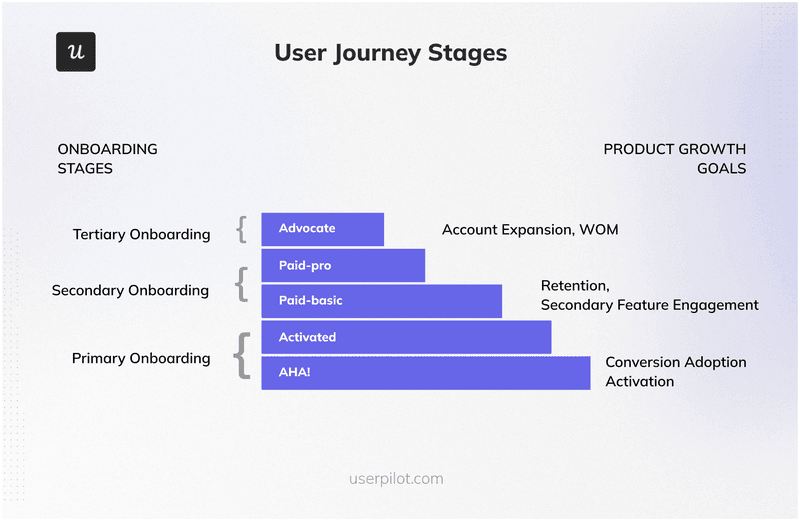
8 Ways to use artificial intelligence in the onboarding process
So how exactly can you leverage AI to deliver better onboarding experiences to your users? Let’s look at a few options.
1. Use AI to analyze new customer data and personalize customer experiences
What do you need to personalize onboarding experiences for your users? Customer data. The more, the better. And AI is great at analyzing it.
You can use AI to analyze customer welcome survey responses, their feedback, and product behavior to tailor the in-app guidance to their needs.
Currently, neither Userpilot nor any other user onboarding tool we’re aware of can seamlessly design such customized experiences without your input, but it’s not difficult to imagine that it will be possible pretty soon.
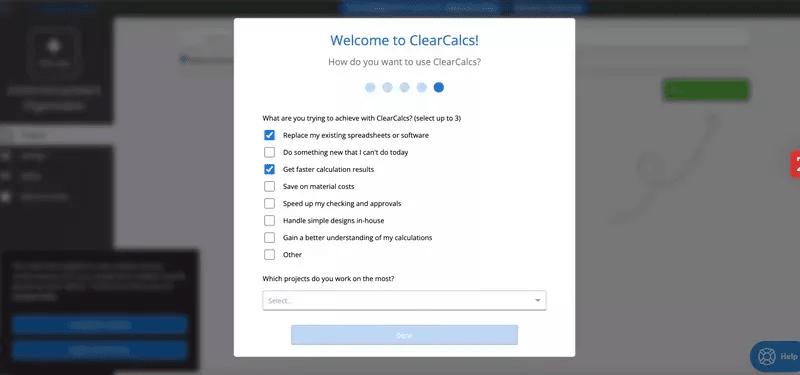
2. Refine in-app messaging with an AI writing assistant to boost engagement
To drive product adoption, your user onboarding process needs a clear, precise, and actionable copy.
AI can do that for you.
The number of AI copywriting tools out there is growing by the hour and many other products integrate this functionality into their features. For example, Userpilot offers an AI writing feature that helps teams refine their content.
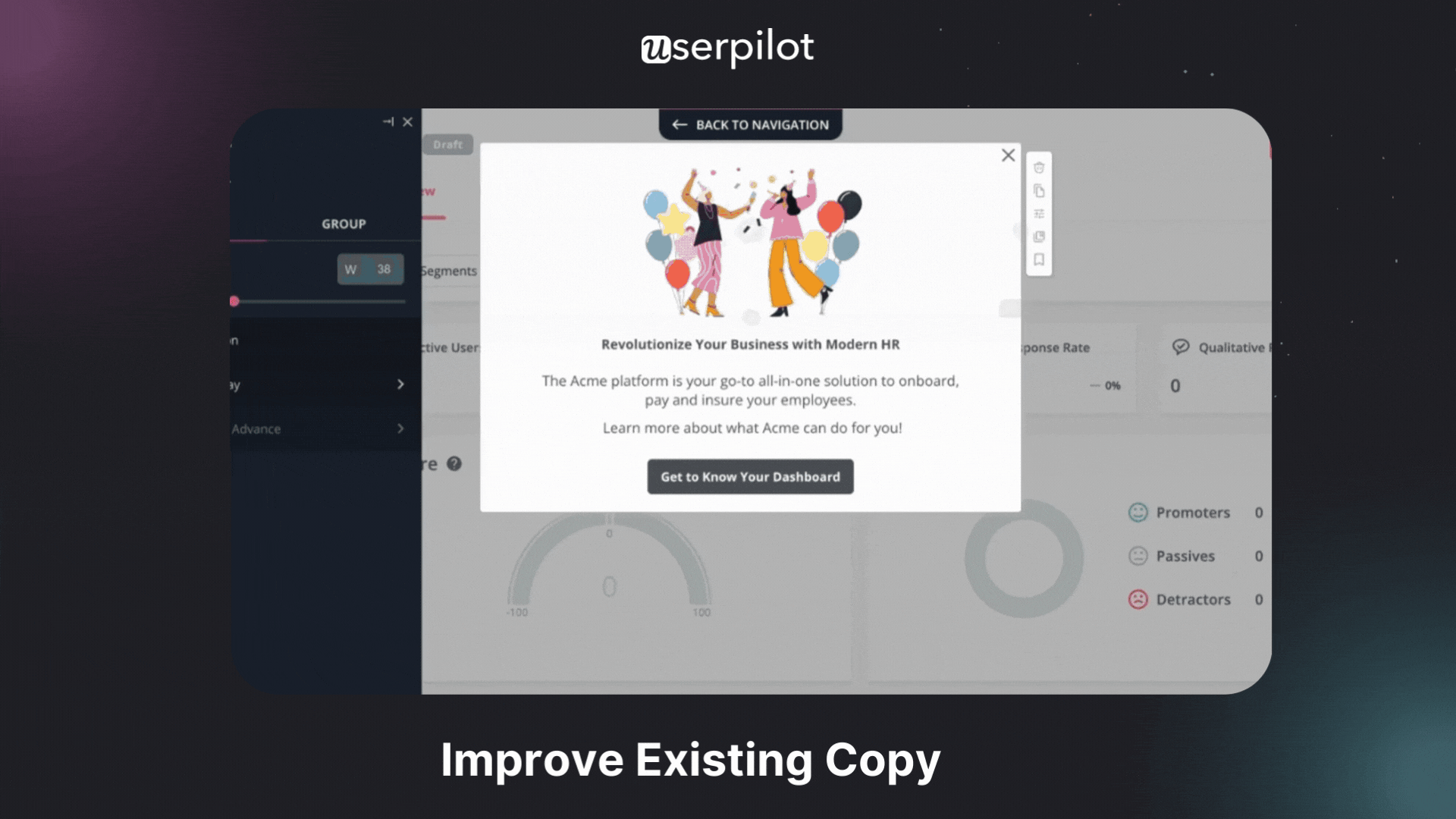
It won’t be long before you can train your AI models on the language used by your users, for example, in their feedback or interviews. In this way, you will be able to create copy that resonates better by emulating their tone of voice and style.
It won’t be long before you can train your AI models on the language used by your users, for example, in their feedback or interviews. In this way, you will be able to create copy that resonates better by emulating their tone of voice and style.
3. Implement AI in content localization
Leveraging AI can help you save time on localizing your content to offer on-demand help tailored to users in their preferred language.
You can implement AI-powered translation tools to automatically convert onboarding content into multiple languages.
This ensures that users across different regions can access information in their native language, breaking down language barriers and promoting inclusivity.
For example, using Userpilot’s AI-powered localization, you can localize content for surveys, onboarding flows, resource centers, etc.
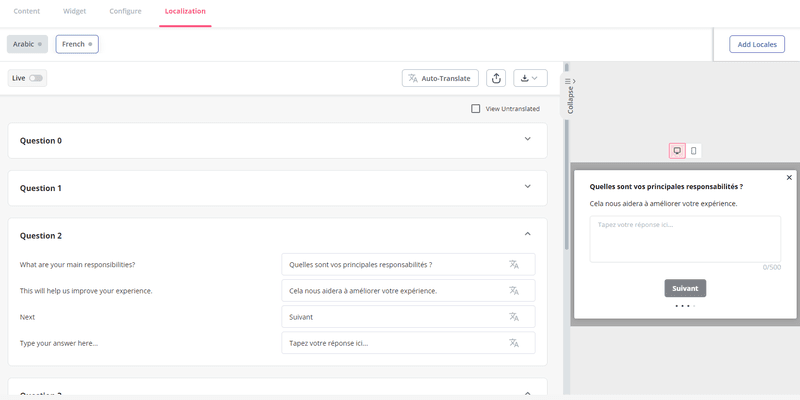
4. Create in-app AI videos to educate new users during customer onboarding
Videos make onboarding more engaging and reduce pressure on your support teams. You can easily include them in your modals or resource center modules to provide a more enjoyable self-paced learning experience.
The problem is that videos are time-consuming and expensive to make. Or, at least, they used to be.
With the tools available at the moment, you can create videos featuring AI-generated avatars at scale in no time.
Want to see how it works?
Just check out this video we’ve created. It’s about user onboarding, of course.
5. Use AI to analyze data and optimize user onboarding
Another way to harness the analytical power of AI is to optimize the customer journey.
AI can analyze data and use predictive modeling to foresee the path your users will take. If there are multiple steps in the journey, AI could analyze how users progress through each of them and remove redundant ones.
This will save users time and help them adopt the product in less time.
6. Use AI-powered chatbots to offer immediate assistance
AI-powered chatbots provide quick and accurate responses to user inquiries, streamlining customer support, and enhancing user engagement.
They are available 24/7 and can easily help you automate routine tasks like dealing with FAQs.
By leveraging Natural Language Processing (NLP) capabilities, AI chatbots can understand and interpret user questions, even if they are in informal language – providing accurate and contextually relevant responses.
And they learn from user interactions and feedback, constantly improving their performance and understanding of user needs. This enables them to provide increasingly accurate and relevant assistance over time.
7. Perform sentiment analysis with AI
User sentiment is how your customers feel about the product experience and you can use this to improve your onboarding processes.
Performing sentiment analysis requires processing large amounts of customer data. As we already mentioned, that’s where AI excels.
AI-powered tools can easily analyze quantitative data, such as CSAT or NPS scores, as well as qualitative feedback. For example, you can use it to analyze user responses to open-ended questions to spot common themes and patterns that will help you identify friction.
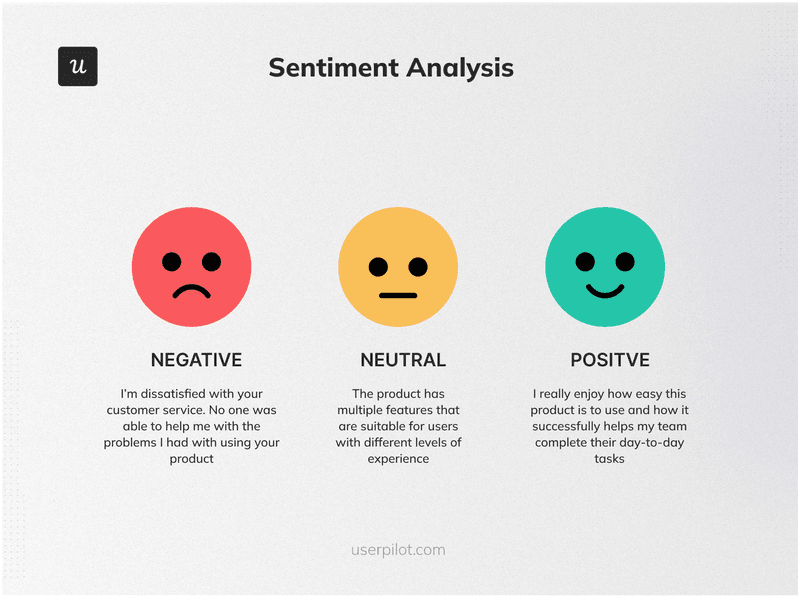
8. Leverage predictive analytics to reduce churn
Predictive analysis uses past customer data and machine learning algorithms to predict future user behavior. How can you use such insights?
For example, it can help you identify the user segments that are at risk of churning. You can proactively prevent this by addressing their pain points and pushing them onto the happy path.
The best AI-based solutions for successful onboarding
You can easily leverage generic AI tools like ChatGPT to enhance aspects of the user onboarding process. There are also dedicated onboarding tools with integrated AI functionality offering more comprehensive solutions. Let’s have a look at a few examples.
Userpilot for optimizing the onboarding experience with AI wiritng assistant
Userpilot is a product adoption platform. It enables you to collect user feedback and analyze customer product usage to design a successful onboarding process.
And of course, then you can design fully customized in-app onboarding flows to drive product adoption. That’s where Userpilot shines.
Its AI-powered WYSIWYG (What You See Is What You Get) editor allows you to create and improve your in-app guidance copy. All you have to do is highlight the relevant section and click the ‘Ask AI’ button.
What can you ask it to do for you? The prompts include Continue writing, Fix spelling & grammar, Summarize, Improve writing, Make longer, and Make shorter. Choose one of the options and let Userpilot do the magic.
Here’s how it works.
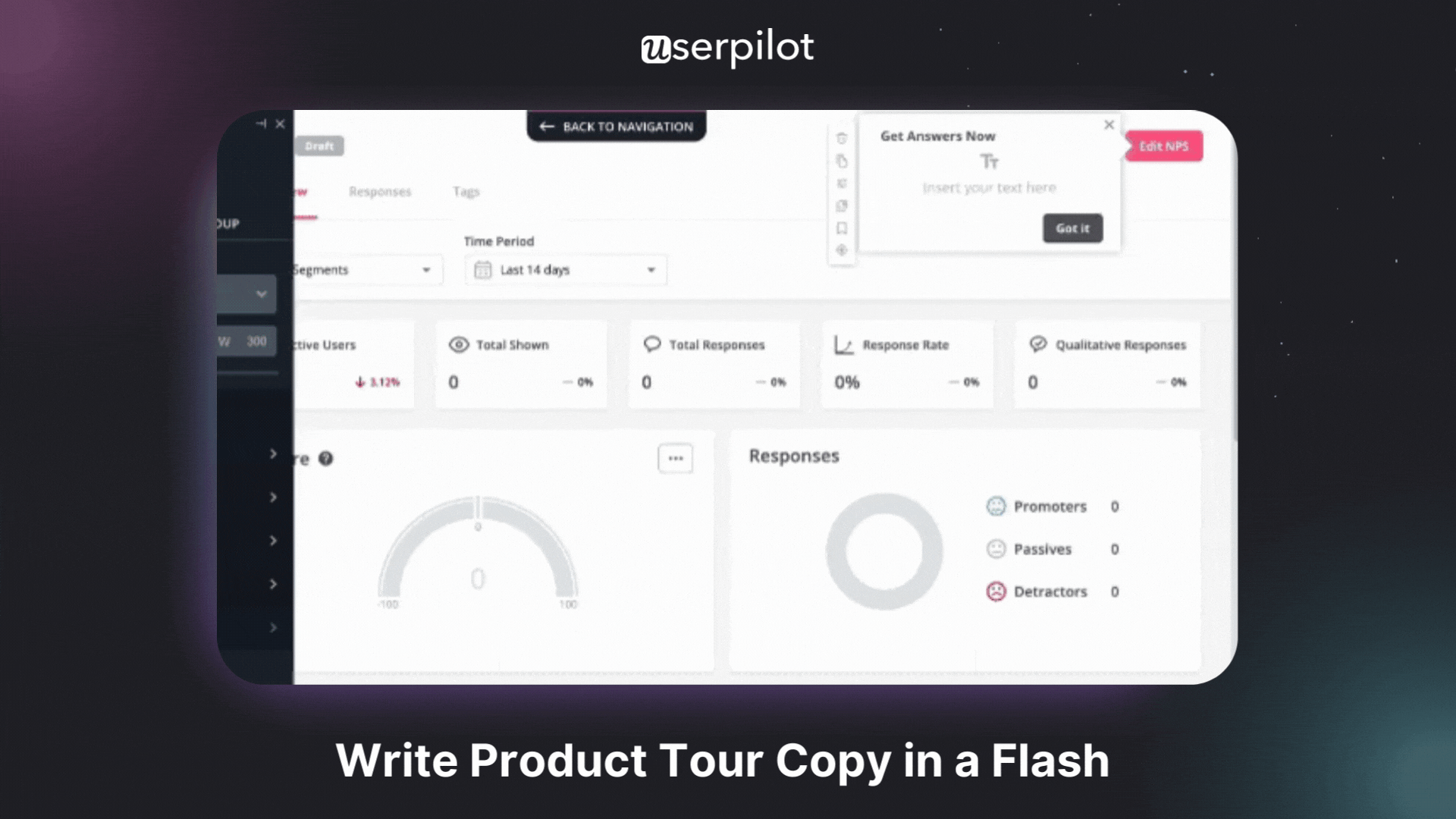
If you’re starting from scratch, just press “space” in any text box inside modals, tooltips, banners, etc, and insert a prompt.

Be as specific as possible and let AI generate your text.
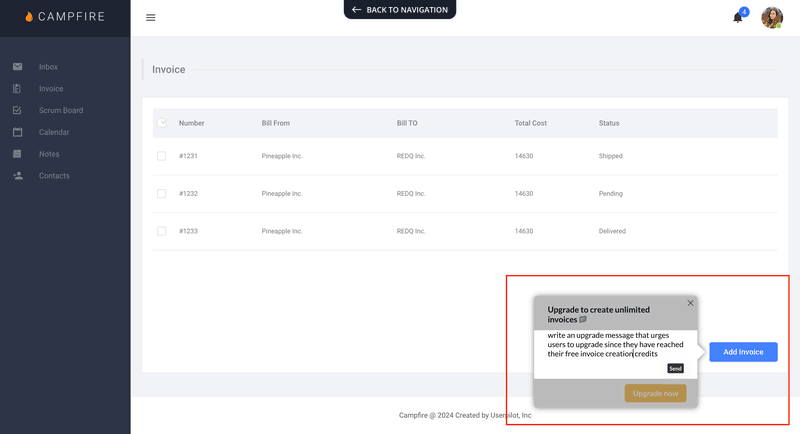
You can then, of course, use AI prebuilt prompts to edit, make longer or shorter, and optimize to fit your needs.
In addition, you can use Userpilot’s AI-powered localization to provide target help for your international users. All you have to do is choose the desired language(s) and it will automatically translate the content.
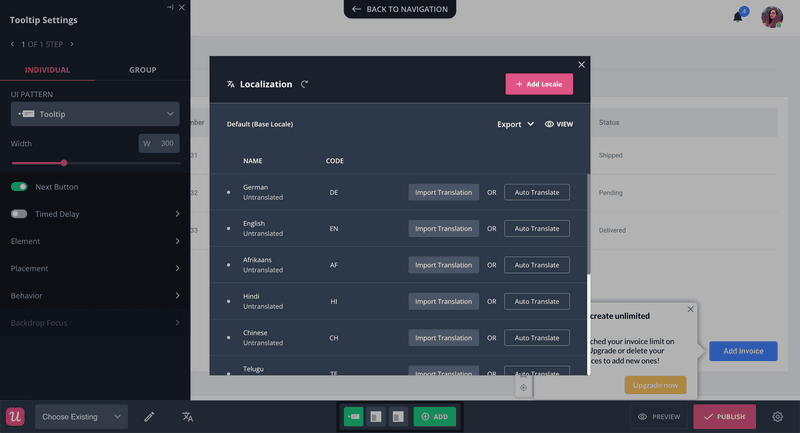
Once you turn on the localization for the preferred language, it will automate your flow translation. By clicking the View button, you can see how it turns out.
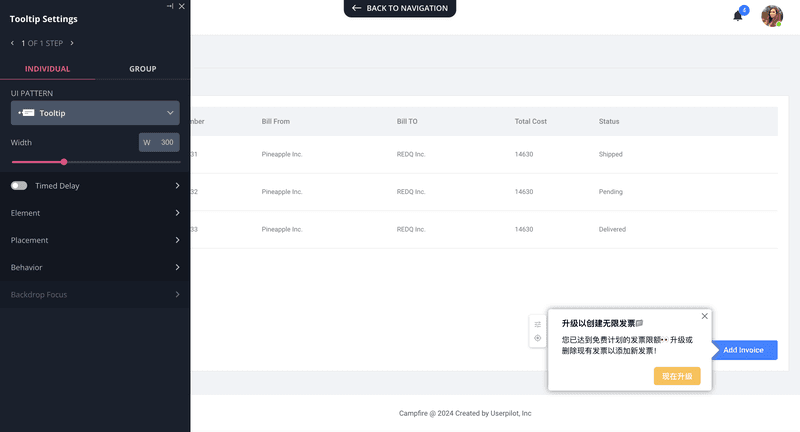
Synthesia for creating AI-generated video tutorials
Synthesia is an AI tool that uses deep learning techniques to generate realistic videos with custom text, images, and audio. It can be effectively used to create onboarding videos for users.
Get started by writing the script (why not use AI for that too?), upload it, choose a template, and select one of 120 avatars that will best appeal to your target audience. You can also customize the background and frames to match your UI.
Synthesia does most of the work. It converts the text to speech and generates the video for you. You can then add them to your in-app messages or include them in the self-help materials.
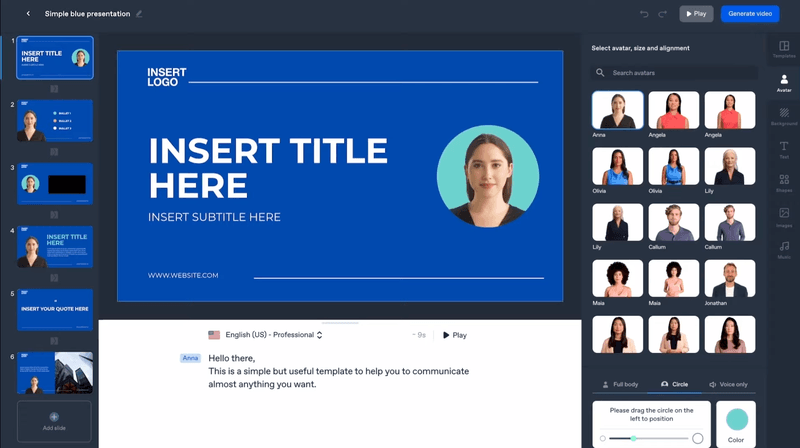
Freshchat for offering assistance through an AI chatbot
Freshchat is an AI-based customer messaging solution.
It enables SaaS companies to automate in-app customer support with an extremely potent chatbot.
What are its key features?
Basically, it can provide contextual 24/7 assistance in 33 languages, either through web widgets or via popular messaging channels like WhatsApp or Facebook Messenger. You can also use it to send targeted messages to reach out to your customers.
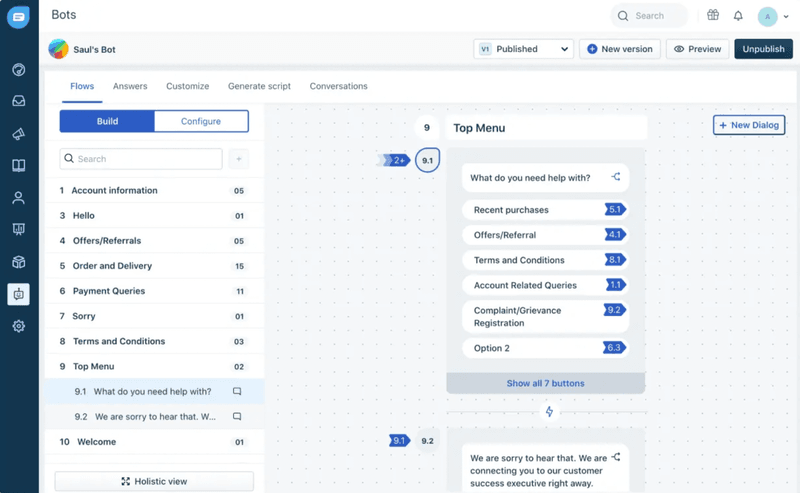
Conclusion
AI user onboarding solves a lot of problems that product and customer success teams face at the moment.
It allows them to process and analyze large amounts of data in no time for informed decision-making and personalization of the user experience.
It reduces the costs involved in running large customer support teams and is capable of delivering support in less time. AI also makes the onboarding content clearer and more captivating.
If you want to see how you can use Userpilot’s AI-powered features to create quality user guidance copy, book the demo!




